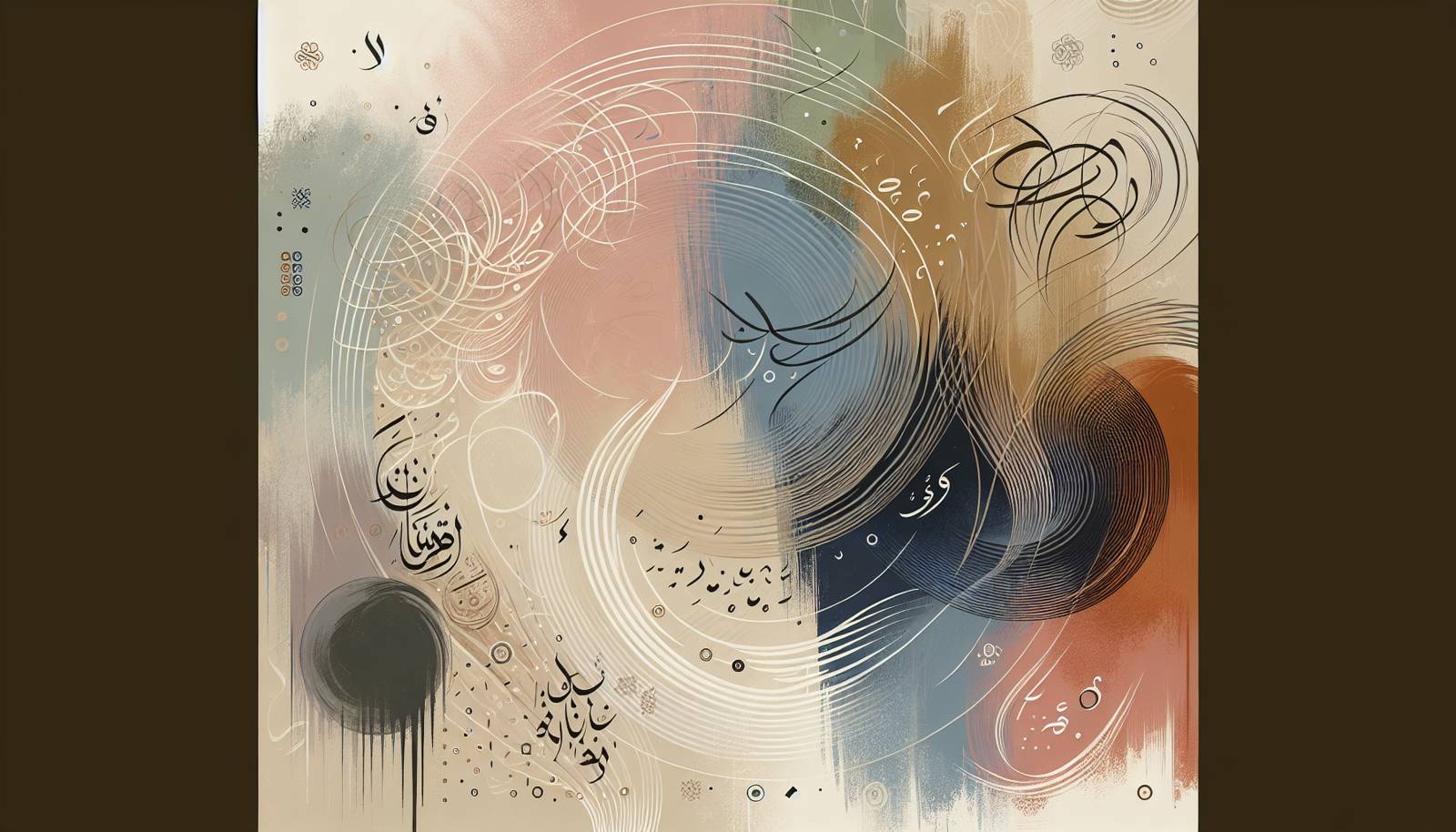
FAQ About The Role of Calligraphy in Cultural Identity

What is calligraphy and why is it important in cultural identity?
Calligraphy is the art of beautiful handwriting and encompasses the design and execution of lettering with a pen, ink brush, or other writing instrument. It holds cultural importance because it reflects the traditions, values, and artistic sensibilities of a society. In many cultures, calligraphy is not just a form of decoration but a pivotal part of cultural identity, serving as a bridge between the past and the present and preserving linguistic heritage.

How does calligraphy contribute to cultural heritage preservation?
Calligraphy contributes to cultural heritage preservation by maintaining historical writing styles and techniques that are unique to specific cultures. It is often used to record important religious texts, classical literature, and historical documents, becoming a vital tool in keeping the linguistic and cultural heritage alive for future generations.

Which cultures are known for their distinct calligraphy styles?
Many cultures have distinct calligraphy styles, including Chinese, Arabic, Persian, Japanese, and Western cultures. Each of these has developed unique scripts and techniques over centuries, reflecting their particular aesthetic philosophies and cultural narratives.

How does Chinese calligraphy reflect Chinese cultural values?
Chinese calligraphy is deeply embedded in Chinese cultural values, emphasizing harmony, balance, and unity. It is considered an art form that combines artistic expression with spiritual character, hence embodying the Confucian ideals of self-discipline, moral integrity, and literature's role in personal development.

In what ways has Arabic calligraphy influenced Islamic culture?
Arabic calligraphy holds a special status in Islamic culture due to the prohibition of figurative representation in Islamic art. It has been extensively used in religious contexts, such as in the Quran, as well as in architecture and decorative arts. Arabic calligraphy is not only a spiritual medium but also a symbol of Arab identity and cultural pride across the Islamic world.

How did Japanese calligraphy evolve and what is its cultural significance?
Japanese calligraphy, or 'shodo,' evolved through the influence of Chinese characters and the development of Japan’s own indigenous script, the Kana. It is a highly respected art form that embodies the philosophy of simplicity and meditative practice, reflecting the Japanese aesthetic principles of minimalism and balance.

What role does Persian calligraphy play in Iranian culture?
Persian calligraphy is a celebrated art form in Iranian culture, known for its decorative elegance and expressive fluidity. It plays a crucial role in Iranian art and literature, and it is often used in manuscripts and architecture. Persian calligraphy reflects the cultural and historical depth of Iran, bridging past and present through its aesthetic tradition.

How is calligraphy utilized in Western cultures?
In Western cultures, calligraphy has historically been used for religious manuscripts, literary texts, and formal documents. Over time, it has evolved into an art form used in personal expression, such as letter art and graphic design. Western calligraphy is also prominent in celebrations like weddings and events, highlighting its continuing cultural relevance.

Can calligraphy act as a medium for intercultural exchange?
Yes, calligraphy can act as a medium for intercultural exchange by showcasing the beauty and diversity of linguistic art forms across different cultures. Exhibitions and collaborations between calligraphers from various cultural backgrounds can foster mutual understanding and appreciation of distinctive artistic traditions.

What are some common misconceptions about calligraphy?
Common misconceptions about calligraphy include the notion that it is merely decorative without any deeper cultural or spiritual significance. In reality, calligraphy is often imbued with meaning, expressions of cultural identity, and traditional values. Another misconception is that calligraphy is a dying art; in fact, it is experiencing a resurgence in popularity globally due to its aesthetic appeal and cultural significance.

Why is calligraphy experiencing a resurgence in popularity today?
Calligraphy is experiencing a resurgence in popularity due to its timeless appeal and the modern revival of interest in handmade and personalized art forms. In an increasingly digital world, people find value in the tactile and expressive nature of calligraphy, using it for personal projects, home decoration, and as a form of mindfulness practice.

How has modern technology impacted the art of calligraphy?
Modern technology has impacted calligraphy by providing digital tools that allow for new forms of expression and dissemination. While traditional methods are still valued, many calligraphers utilize software for digital calligraphy, expanding their reach and allowing for innovative approaches to the art. This has enabled broader accessibility and interest among new generations.

What materials are traditionally used in calligraphy?
Traditional calligraphy materials include brushes, pens, ink, and paper or parchment. These materials vary based on cultural practices, such as ink brushes in Chinese and Japanese calligraphy or quill pens in Western traditions. The choice of materials often reflects the specific aesthetics and techniques associated with each culture.

How does calligraphy function as a meditative practice?
Calligraphy functions as a meditative practice by encouraging focus and relaxation through repetitive and deliberate movement. Practitioners often find it calming, as it requires concentration and an immersion in the moment, similar to meditation. This focus can lead to increased mindfulness, making it both an art form and a spiritual exercise.

How do calligraphers learn and perfect their craft?
Calligraphers often learn through traditional apprenticeships, formal education, or self-teaching using manuals and guides. Mastery requires diligent practice, study of historical styles, and understanding the cultural context of the scripts they work with. Competitions, exhibitions, and collaborations also offer opportunities for growth and recognition in the field.

What is the relationship between calligraphy and language?
The relationship between calligraphy and language is intrinsic, as calligraphy transforms written language into art. It emphasizes the aesthetic presentation of language, enhancing the emotional and cultural impact of the text. This relationship highlights linguistic beauty and the skill involved in writing as an art form.

How does calligraphy differ from typography and handwriting?
Calligraphy differs from typography and handwriting in its artistic and expressive focus. While typography involves the design of typefaces for printed media, and handwriting is the personal style of writing, calligraphy is about creating beautiful, stylized lettering with intent and artistic flair, often using specialized tools and techniques.

Are there international events dedicated to calligraphy?
Yes, there are numerous international events dedicated to calligraphy, such as workshops, exhibitions, and competitions that attract artists from across the globe. These events offer opportunities to showcase work, exchange ideas, and celebrate the diversity of calligraphic traditions.

What impact has calligraphy had on modern graphic design?
Calligraphy has significantly influenced modern graphic design by inspiring fonts and artistic lettering styles. Its aesthetic principles are incorporated into logos, posters, and branding materials, adding an element of elegance and visual appeal that reflects the sophistication of traditional hand-lettered art.

How can one start learning calligraphy?
To start learning calligraphy, one can begin by selecting appropriate materials such as pens, paper, and ink, and studying different styles to find interest. Online resources, books, and classes provide guidance on techniques and basic strokes. Starting with practice drills and regular exercises will develop the skills and confidence needed to advance in calligraphy.
